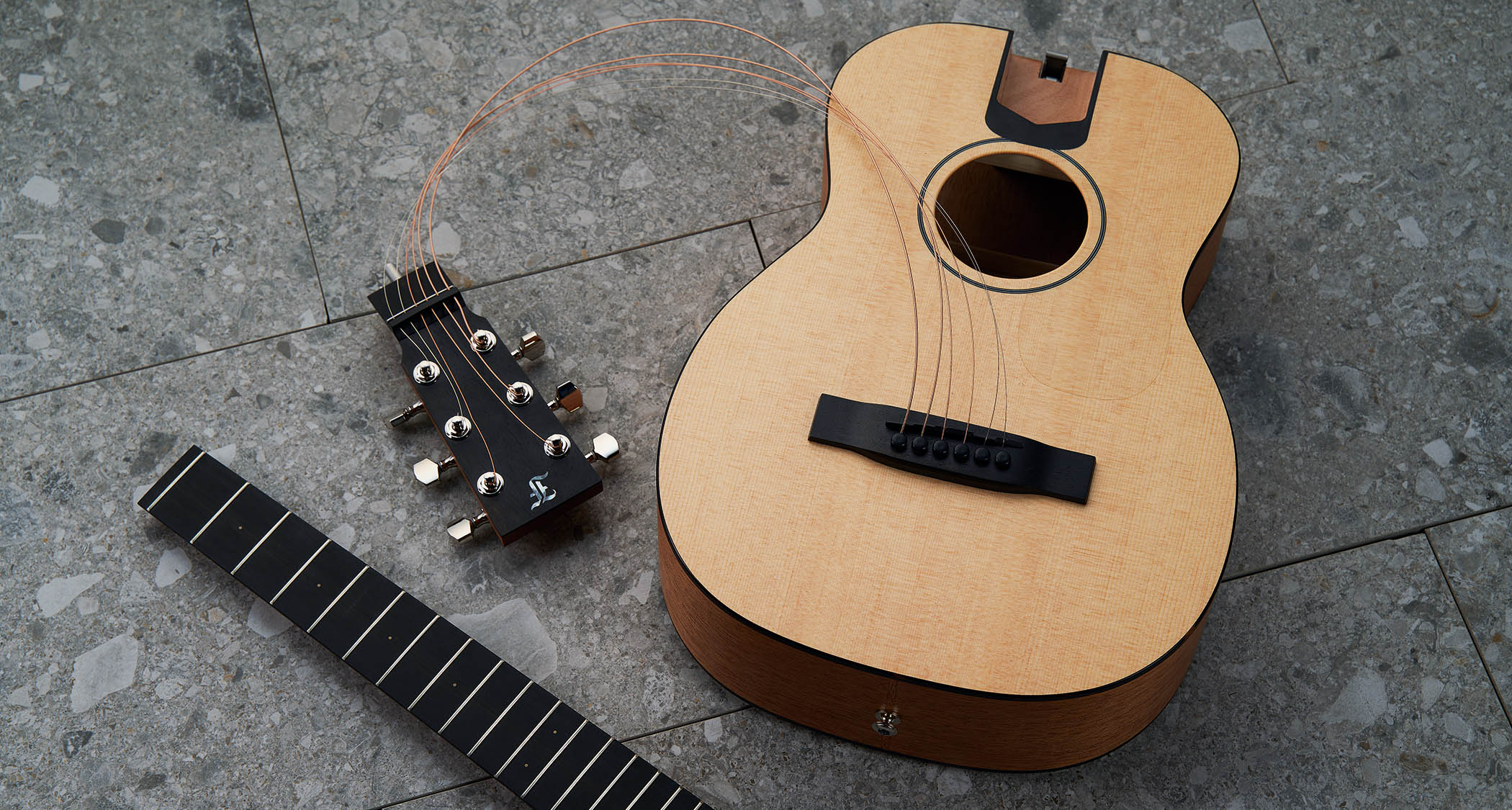Guitar World Verdict
We have to admit that we were dubious at first. After all, how good is a guitar that breaks down into three separate component parts going to sound? We expected a compromise, but instead found a mini instrument that is worthy in the tonal stakes before you even begin to consider its merits as a readily transportable companion on your travels.
Pros
- +
Superbly well thought-out travel guitar.
- +
Easy assembly and storage.
- +
Great sounds.
Cons
- -
Some may be put off by the Ikea-like self-assembly, but we’d urge you to give it a try.
You can trust Guitar World
Here at Guitarist we’re used to instruments arriving at our door in guitar-shaped cases. And so when Furch’s Little Jane turned up in something that closely resembled a hiker’s backpack it became the talking point of the afternoon. A guitar that folds down into three separate parts? It sounded a little like a dark ‘some assembly required’ nightmare. As it happens, we were in for a pleasant surprise.
Travel guitars are far from being a new concept. Possibly the first commercially successful model was Martin’s Backpacker, which appeared on the radar in the early 1990s and enjoyed a trip to space on NASA’s Space Shuttle in 1994, as well as subsequently journeying up Mount Everest – and you can’t get any more well travelled than that.
The only downside to the Backpacker was its unusual shape, resembling a lacrosse racket more than a regular acoustic guitar, and it’s quite possible that this aesthetic limited its appeal for some.
A travel-friendly alternative, of course, would be the many mini guitars on today’s market, such as the Wee Lowden, Baby Taylor and the Little Martin – easy to take on a camping trip or hiking around the Lake District but still a tad bulkier than it would need to be to qualify for the holiday essentials list.
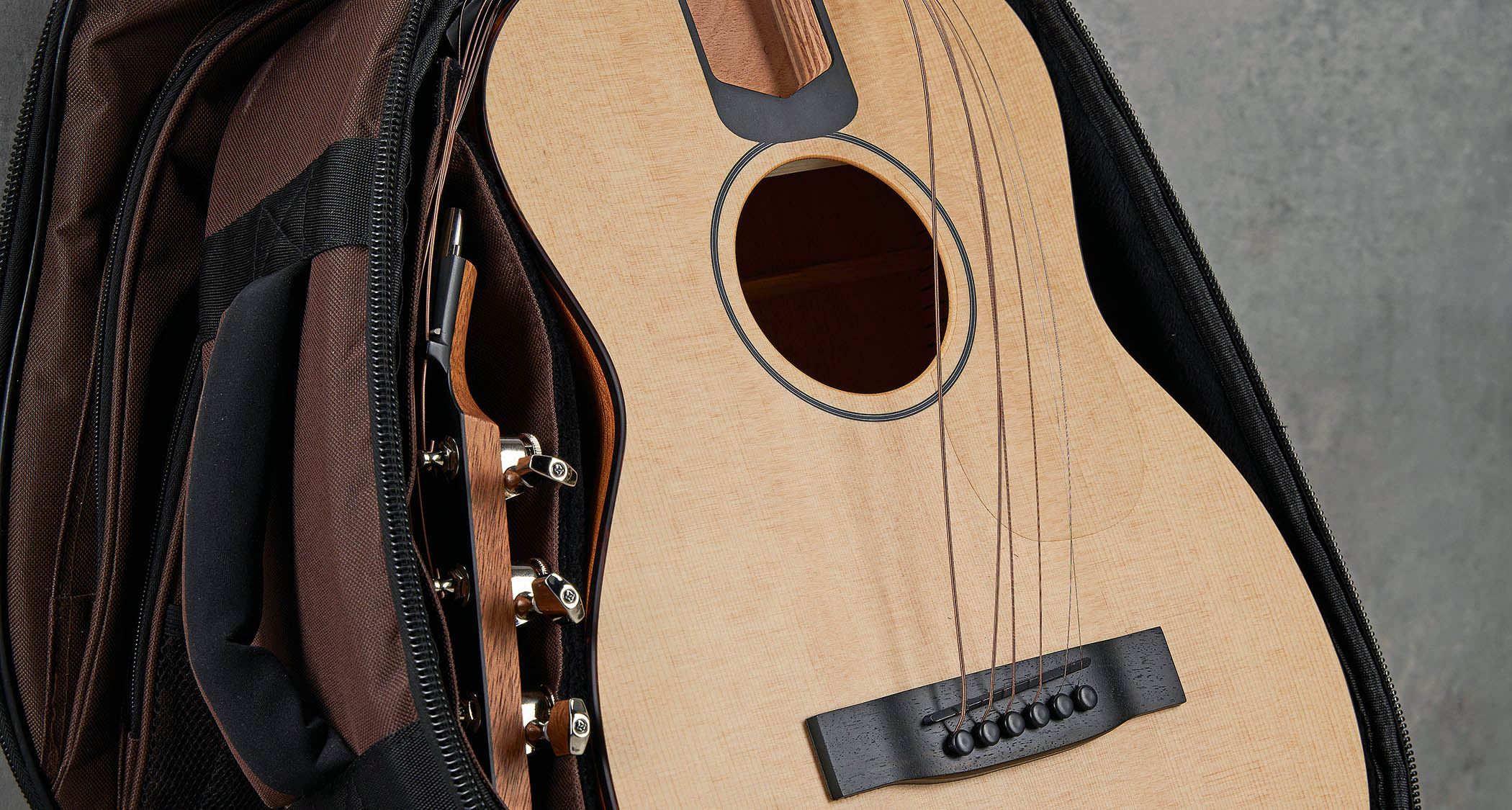
On the face of it, Furch’s Little Jane manages to combine the portability of a Martin Backpacker with the charm of a mini acoustic, and goes one stage further in that it comes with its own set of luggage.
Our review model is kitted out with a Sitka spruce top and mahogany back and sides, but if that isn’t to your liking the Little Jane is available in all-mahogany, Sitka and rosewood, cedar and mahogany, and a special edition made with Sitka and cocobolo. Quite a lot of choice, then.
Naturally, the elephant in this particular room is the fact that the guitar comes with its own DIY element and so the first thing to do here is to offer some clarification on how everything fits together.
All the latest guitar news, interviews, lessons, reviews, deals and more, direct to your inbox!
Fundamentally speaking, the guitar arrives in three pieces, comprising the body, the neck and the headstock. The neck is stored inside the guitar’s body through a port in the upper bout and secured via a plastic slot into which it fits snugly.
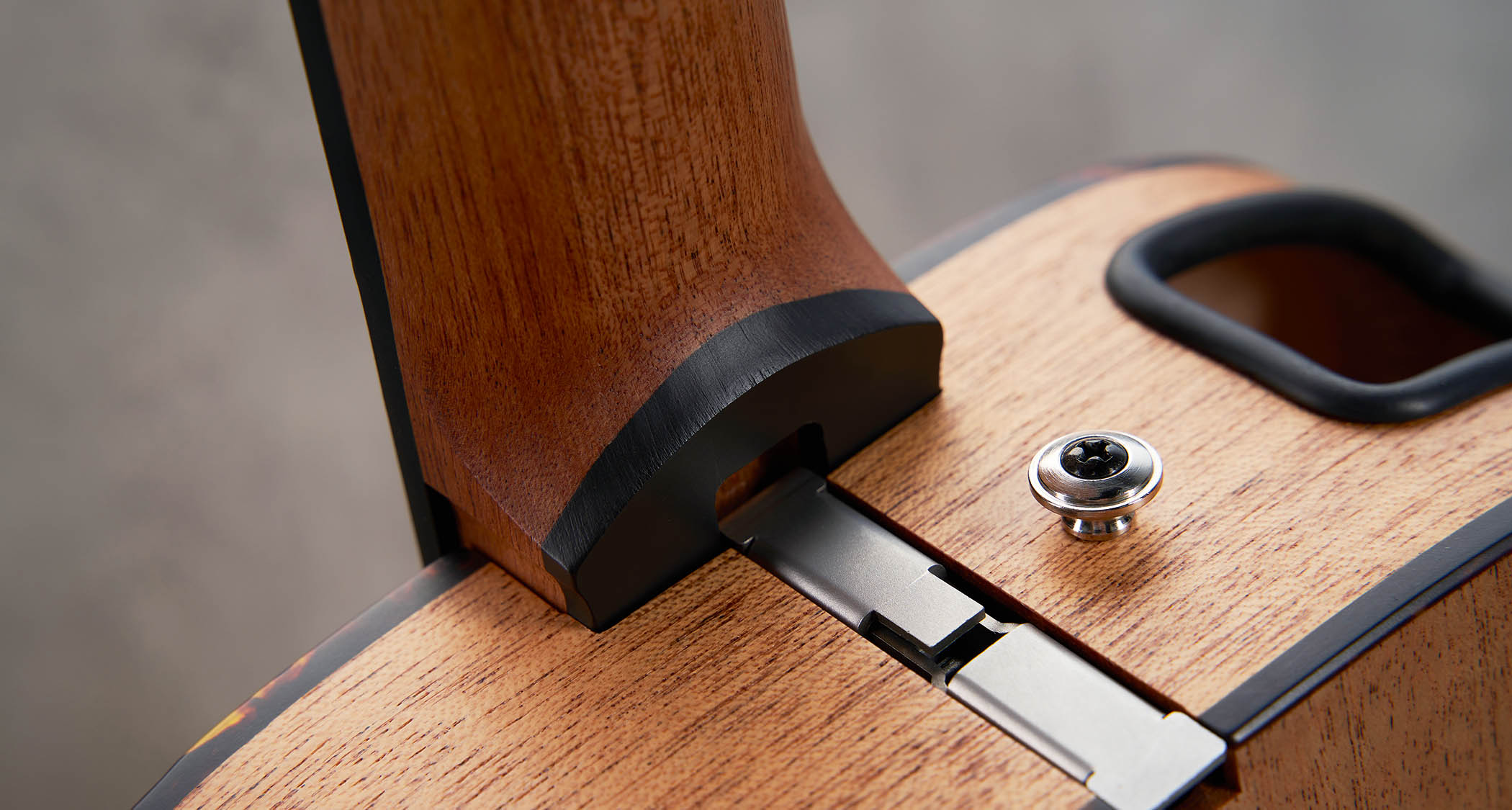
The headstock, with the strings pre-attached, fits into a separate compartment inside the backpack. In order to keep the strings in position, the nut has the strings threaded through it, as opposed to over the top, and the string height is governed by a zero fret. If all this sounds very complicated so far, bear with us because it really is simpler than it sounds.
We found assembly to be quite straightforward. The headstock attaches to the top of the fretboard just before the 1st fret and is secured by two metal posts to keep it in position. Once assembled, string tension makes sure it stays put, and the joint between headstock and fretboard is so subtle you really have to look for it once everything is in place.
Joining the neck to the body is quite a smooth operation, too. Once you slip the neck into the slot in the guitar’s body, there is a metal clip where the heel would normally sit that catches the back of the neck and, once you’ve clipped it in place, assembly is complete. We managed to fit everything together without looking at any instructions and so it really is a quick, intuitive and simple process.
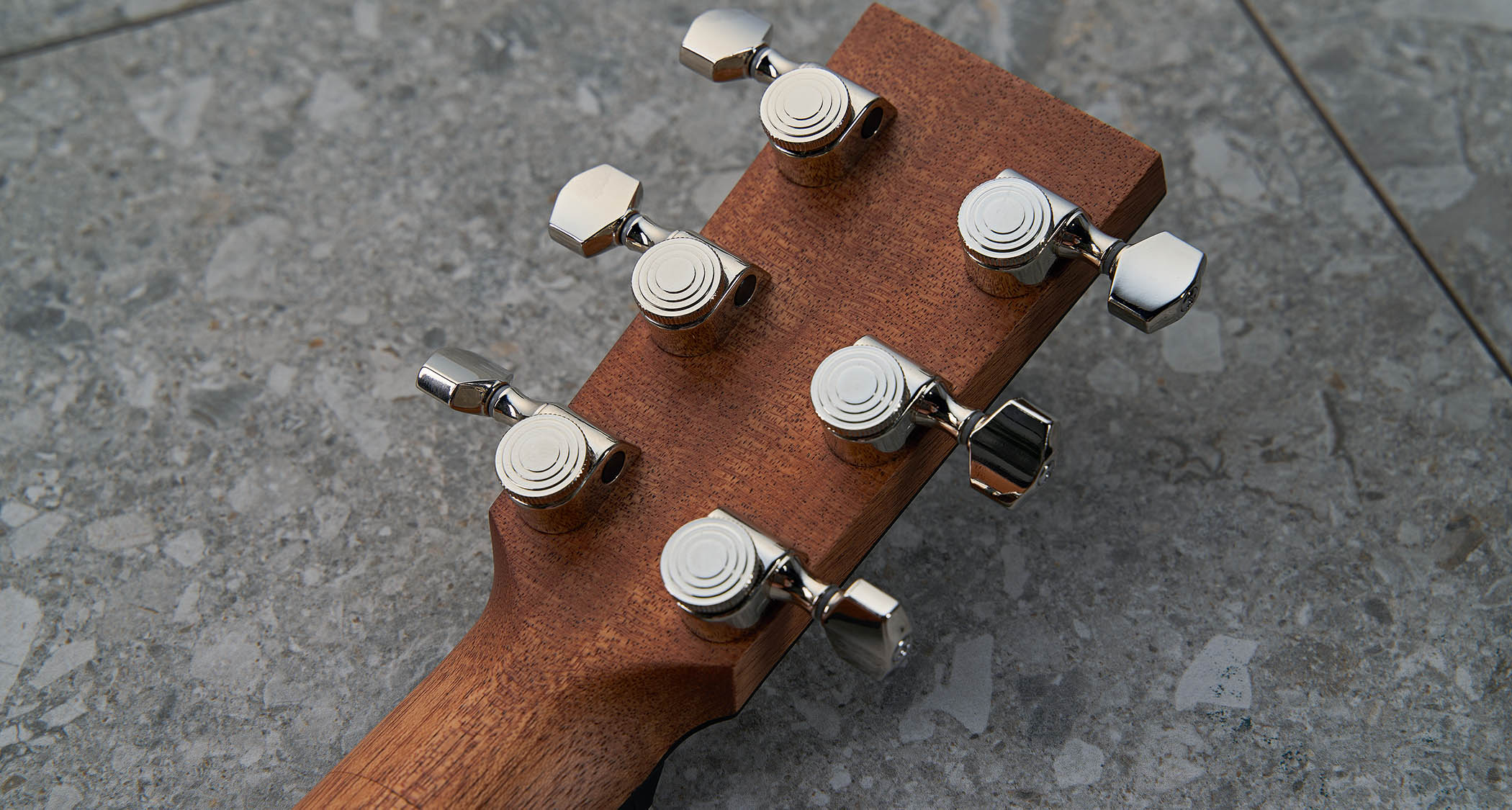
Furch tells us that when the guitar is assembled it should come back in tune, and amazingly this was our experience. In view of the fact that the guitar had travelled to us from Eastern Europe, this is no mean feat.
In order to confirm our findings in this respect, we disassembled the guitar again, left it for a number of days, and repeated the experiment. This time one string needed a quick tweak, but that was it. In any case, it seems that it’s possible to fit the guitar together from its constituent parts without the faff of tuning from totally slack strings every time.
As we’ve said, the back, sides and neck are all African mahogany, the body bound with faux tortoiseshell. The Sitka top lives up to its AA-grade status, with an ebony bridge, black and white two-ring rosette, plastic string pins and an all-but-invisible pickguard just under the soundhole as furniture.
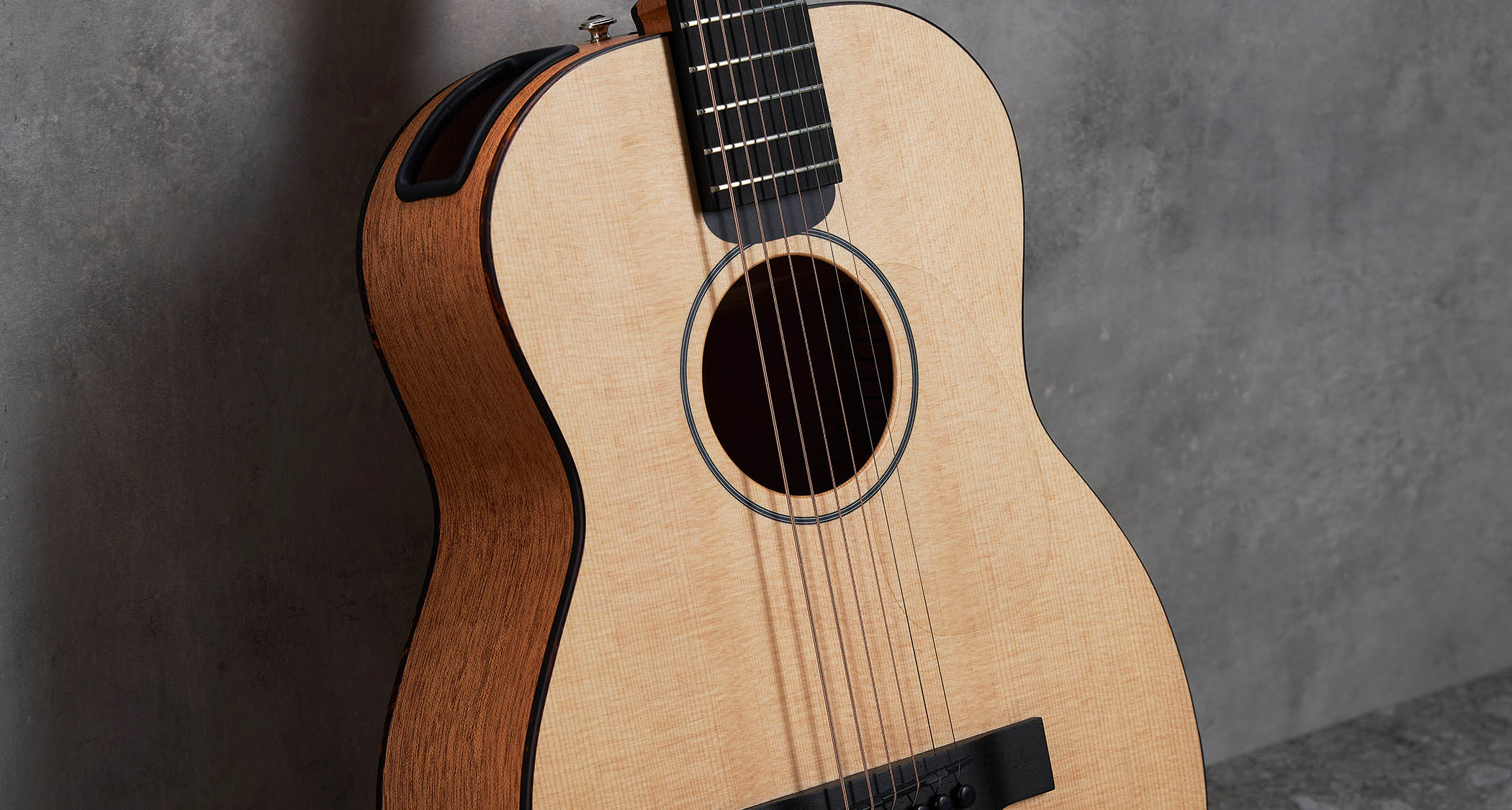
At the other end of the guitar there are Furch’s own locking tuners, which we gather are present in order to keep tuning even more stable when constructing and deconstructing the guitar.
The open-pore finish has a sleek look of its own, and the ebony ’board with its 45mm nut width adds to our first impressions – this is a very nice-looking, well-constructed mini guitar.
With everything complete, it’s time to look at Little Jane from the point of view of its prowess as a musical instrument. After all, ingenuity is all very well, but if the end result is disappointing, all is pretty much lost.
Feel & Sounds
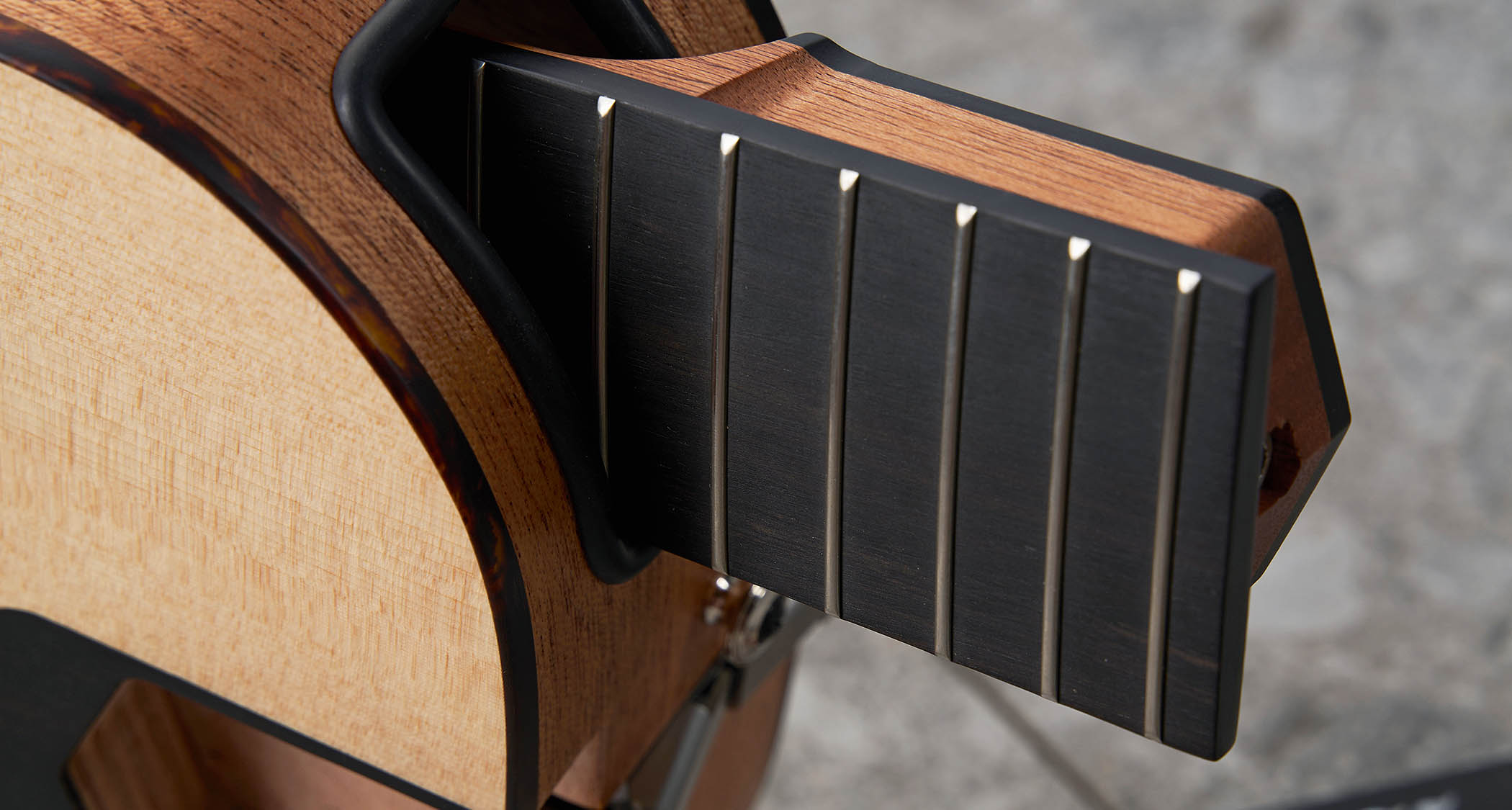
We’ve commented on the feel of Furch’s neck carves on instruments we’ve reviewed before and the Little Jane falls straight into line with what the company refers to as a “soft V”, but it’s so subtle – especially here – that if someone had told us that the neck profile was of the full C category we wouldn’t have questioned it.
In any case, it’s supremely comfortable in the hand, that open-pore finish adding something of its own in that it has an almost played in feel to it.
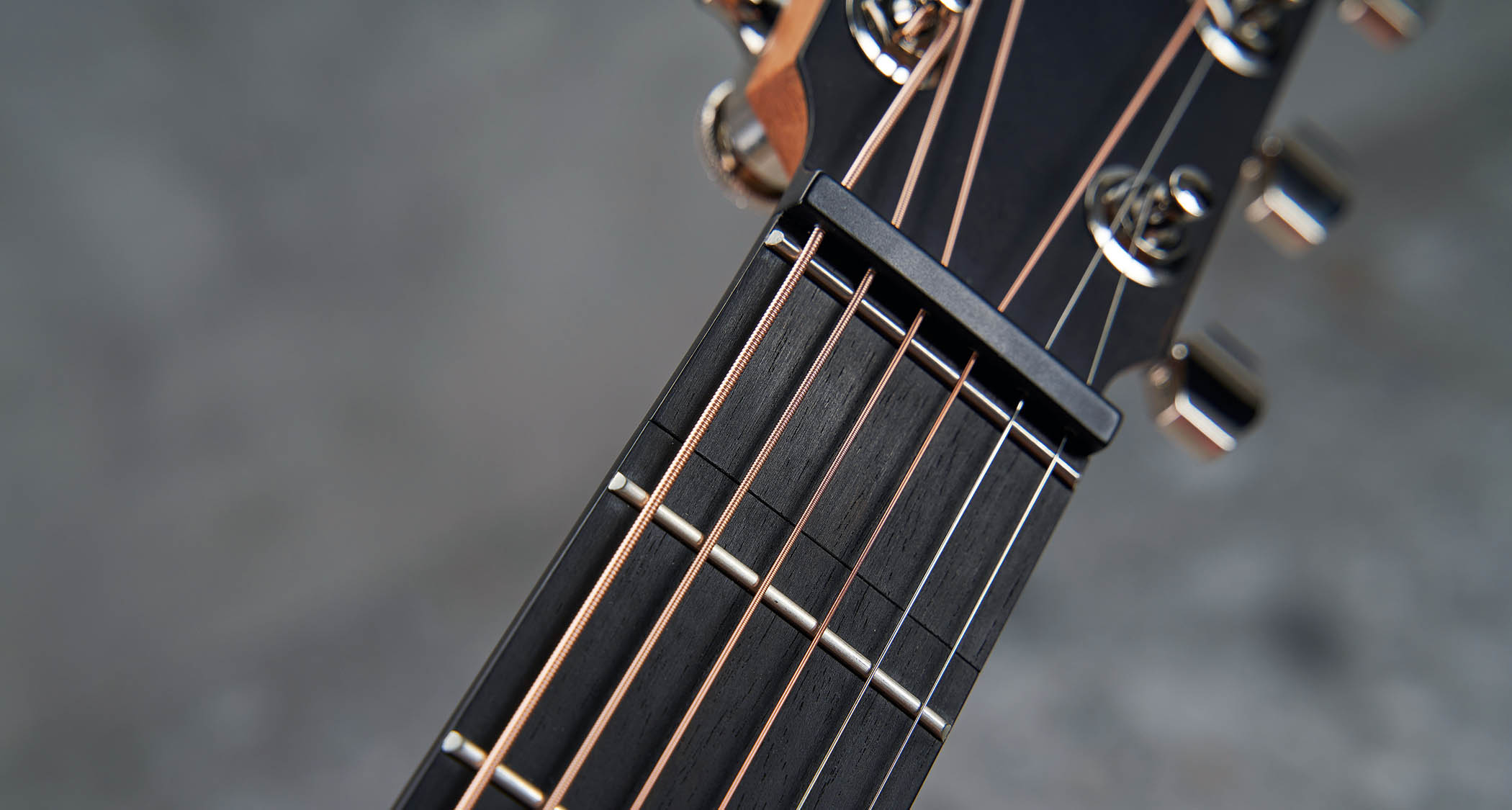
One minor niggle that becomes immediately apparent is that the action is slightly higher than we’d like. We’re only talking a couple of millimetres, and lowering the action on an acoustic is a straightforward job in the right hands – and, yes, we’re well aware that action height is very subjective and what’s perfect for us might be too low for some… Which is why we’re not going to make too much of a fuss about it.
When it comes to sound, the Little Jane has a secret to tell: it’s enormous! We’re aware that the vent for neck storage in the guitar’s body has now taken on secondary duties as a side port and so a lot of the sound is being projected back at us. But even allowing for that, it’s a very loud guitar – much more so than you’d expect from such a trim body.
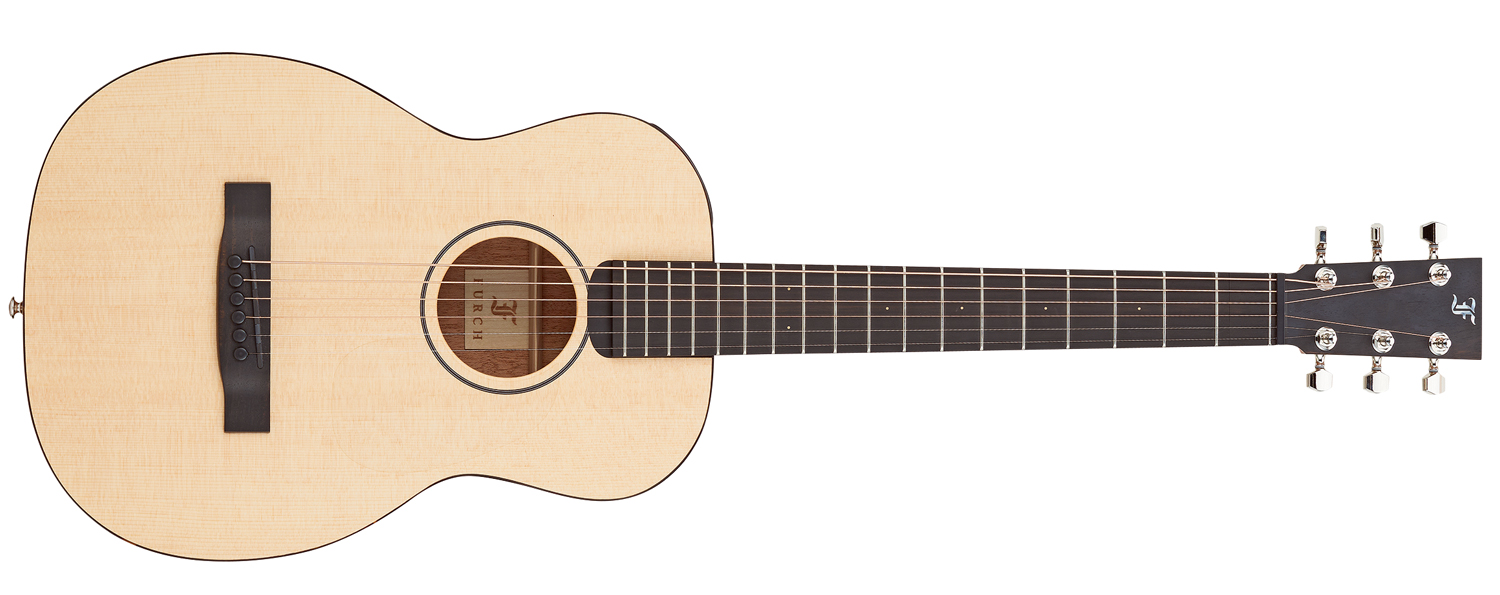
Furch tells us that the bracing inside the guitar has been specially voiced, and we’d applaud this as a complete success because the sound is not only huge but toneful at the same time. This is something that calls upon true craft from a luthier’s point of view and Furch is to be congratulated for hitting the tone-target dead centre.
One of the options offered with the Little Jane range is an LR Baggs EAS-VTC pickup – alas not fitted on our review sample – but it occurred to us that should you choose to take advantage of this option, the Little Jane would make an almost perfect busking guitar.
With a fine set of tones onboard and an easy-to-transport facility into the bargain, it would be a no brainer. What’s more, the backpack would easily fit inside an aeroplane’s overhead storage locker, giving the instrument another strand of useful portability. This whole package really has been very well thought out.
Verdict
We have to admit that we were dubious at first. After all, how good is a guitar that breaks down into three separate component parts going to sound?
We expected a compromise, but instead found a mini instrument that is worthy in the tonal stakes before you even begin to consider its merits as a readily transportable companion on your travels.
Okay, so we might have a very slight issue with string height, but even that wouldn’t blur our impression that the Little Jane is an innovative and extremely well thought-through package.
It might be getting a little late in the year for planning a vacation, but if you can’t leave home without a six-string buddy by your side, add the Furch to the top of your holiday shopping list!
Specs
- PRICE: €1,693 (around £1,428) inc backpack
- ORIGIN: Czech Republic
- TYPE: Travel guitar
- TOP: AA-grade Sitka spruce
- BACK/SIDES: AA-grade African mahogany
- MAX RIM DEPTH: 100mm
- MAX BODY DEPTH: 303mm
- NECK: African mahogany
- SCALE LENGTH: 615mm (24.2”)
- TUNERS: Furch string-lock chrome: gear ratio 1:15
- NUT/WIDTH: Specially designed synthetic/45mm
- FINGERBOARD: Ebony
- FRETS: 18
- BRIDGE/SPACING: Ebony/55mm
- WEIGHT (kg/lb): 1.46/3.24
- Options: LR Baggs EAS-VTC (€187)
- RANGE OPTIONS: Other models in the Little Jane range include the LJ-10 CM (€1,499), the LJ-10 MM (€1,606) and the special-edition LJ-11 SC (€2,590)
- LEFT-HANDERS: Yes
- FINISH: Natural open pore
- CONTACT: Furch Guitars
With over 30 years’ experience writing for guitar magazines, including at one time occupying the role of editor for Guitarist and Guitar Techniques, David is also the best-selling author of a number of guitar books for Sanctuary Publishing, Music Sales, Mel Bay and Hal Leonard. As a player he has performed with blues sax legend Dick Heckstall-Smith, played rock ’n’ roll in Marty Wilde’s band, duetted with Martin Taylor and taken part in charity gigs backing Gary Moore, Bernie Marsden and Robbie McIntosh, among others. An avid composer of acoustic guitar instrumentals, he has released two acclaimed albums, Nocturnal and Arboretum.
